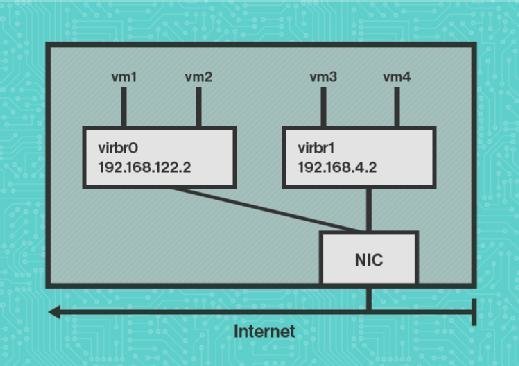

Now open the properties of “This PC” and go to the “Advanced system settings”:

Now we will go to “This PC> Drive C>Program files>QEMU” folder, and copy the path address: Once the installation is finished a “Finish” button will appear on the screen, click on it:
#Qemu network install#
Start the setup by clicking on the “ Next” button:Īccept the agreement by choosing the “I Agree” button:Īssign the location where you want to install the setup and then choose the “Install” button: Select the language and click on the “OK” button: We will go to the folder where the downloaded file has been downloaded and will run the exe file. Now we will run the exe file for the QEMU 64-bit: We will select the 64-bit or 32-bit according to our system requirement.
#Qemu network download#
To install the QEMU we will go to the official site of QEMU and download the Windows version. We can run QEMU to install Ubuntu or any other relevant software. Qemu is an open source virtual machine host app which can be used to emulate different operating systems on the host operating system. This article is associated to how we can run QEMU on Windows. For this purpose we have a Qemu which we can install to run other operating systems. To run it parallel we need to install the virtual machine.
#Qemu network windows 10#
dhcp-leasefile=/var/run/qemu-dnsmasq-$BRIDGE.Installing some software which is only supported by Ubuntu but I have the Windows 10 operating system, what should I do ? Instead of removing windows 10 and then again installing Ubuntu to run that specific software we can run both operating systems parallel. pid-file=/var/run/qemu-dnsmasq-$BRIDGE.pid \ A FORWARD -i $BRIDGE -j REJECT -reject-with icmp-port-unreachable A FORWARD -o $BRIDGE -j REJECT -reject-with icmp-port-unreachable A FORWARD -d $NETWORK/$NETMASK -o $BRIDGE -m state -state RELATED,ESTABLISHED -j ACCEPT A FORWARD -s $NETWORK/$NETMASK -i $BRIDGE -j ACCEPT A INPUT -i $BRIDGE -p udp -m udp -dport 53 -j ACCEPT A INPUT -i $BRIDGE -p tcp -m tcp -dport 53 -j ACCEPT A INPUT -i $BRIDGE -p udp -m udp -dport 67 -j ACCEPT A INPUT -i $BRIDGE -p tcp -m tcp -dport 67 -j ACCEPT A POSTROUTING -s $NETWORK/$NETMASK -j MASQUERADE If do_brctl show | grep "^$1" > /dev/null 2> /dev/null thenĭo_ifconfig "$1" "$GATEWAY" netmask "$NETMASK" upĮcho 1 | do_dd of=/proc/sys/net/ipv4/ip_forward > /dev/null # Optionally parameters to enable PXE support # the COPYING file in the top-level directory.

# This work is licensed under the terms of the GNU GPL, version 2.

Using iptables, create rules that will masquerade traffic from that bridge to the host network. Configure that bridge with a static IP address as the gateway for your virtual network. To configure a NAT network, first create an /etc/qemu-ifup script that creates a bridge without any physical ports.


 0 kommentar(er)
0 kommentar(er)
